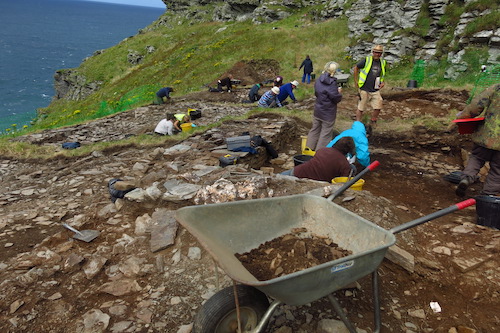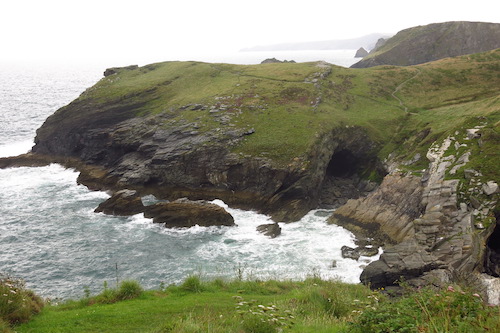Communiqué
Did King Arthur begin in a Dark Ages Trading Village? “King Arthur’s Lost Kingdom” on SECRETS OF THE DEAD, July 28 at 10 pm
< < Back toSecrets of the Dead: King Arthur’s Lost Kingdom
Airs Wednesday, July 28 at 10 p.m. on WOUB
After four centuries of occupation and leadership, the Romans left Britain in 410 AD and the island’s fate was left hanging in the balance. History teaches that in the 5th century, the country descended into a tumultuous and violent period knows as the Dark Ages, leaving the nation vulnerable to invading Angle and Saxon hordes from northern Europe. With a nation divided, a great leader known as King Arthur emerged, uniting the lawless lands to fight off invaders – or at least that’s what the fragmentary historical texts suggest. The truth is, no one really knows what happened, and this pivotal moment in history has been shrouded in mystery – until now.
 In Secrets of the Dead: King Arthur’s Lost Kingdom, Professor Alice Roberts and a team of experts use new archaeological discoveries to decode Dark Ages myths and piece together a very different story of this turning point in Britain’s history that might also explain the legend of King Arthur.
In Secrets of the Dead: King Arthur’s Lost Kingdom, Professor Alice Roberts and a team of experts use new archaeological discoveries to decode Dark Ages myths and piece together a very different story of this turning point in Britain’s history that might also explain the legend of King Arthur.
The key to Professor Roberts’ quest is the excavation of a stone palace complex on the Tintagel peninsula in Cornwall, England – long believed to be the birthplace of the King Arthur legend. More than folklore, was Arthur, in fact ruler, of a prosperous and sophisticated trading village, and the heroic defender of the native Britons against the invading Anglo-Saxons?
Buzzworthy Moments
- At The British Library in London, a well-preserved copy of Geoffrey of Monmouth’s The History of the Kings of Britain is examined. The manuscript is well known for popularizing the story of King Arthur, but was written some 600 years after his reign.
- In Yorkshire, Anglo-Saxon remains are unearthed and show very little evidence of physical violence. At the site, there are no mass graves of defeated warriors, signs of battle, conquest, or slaughter of a great number Britons by Angle or Saxon tribes. In eastern Britain, further evidence points to the Anglo-Saxons being farmers that built communities.
- A five-week excavation at Tintagel, Western Britain fortification believed to be the location where King Arthur was conceived, unearths high-valued pottery and pieces of glassware. When considered along with the agricultural discoveries in the east, evidence suggests 5th-century Britain may have been divided, but by class and culture, not warfare.

- Using high-energy physics, archaeologist Dr. Duncan Sayer examines an unearthed broach with a traditional Anglo-Saxon design, but discovers it was made using a common 5th century British technique. The discovery suggests a blending of British and Anglo-Saxon cultures.
- At Fort Cumberland, archaeologists examine pottery finds from Tintagel that are made up of various materials and designs not familiar to 5th century Britain, including hundreds of artifacts with materials commonly found in Turkey, North Africa and Southwest France. The findings suggest Tintagel was a prosperous and international trading port.
- At Tintagel, archaeologists unearth a stone containing an inscription in Roman Latin and local dialect believed to be for a local monument, suggesting a literate society.

